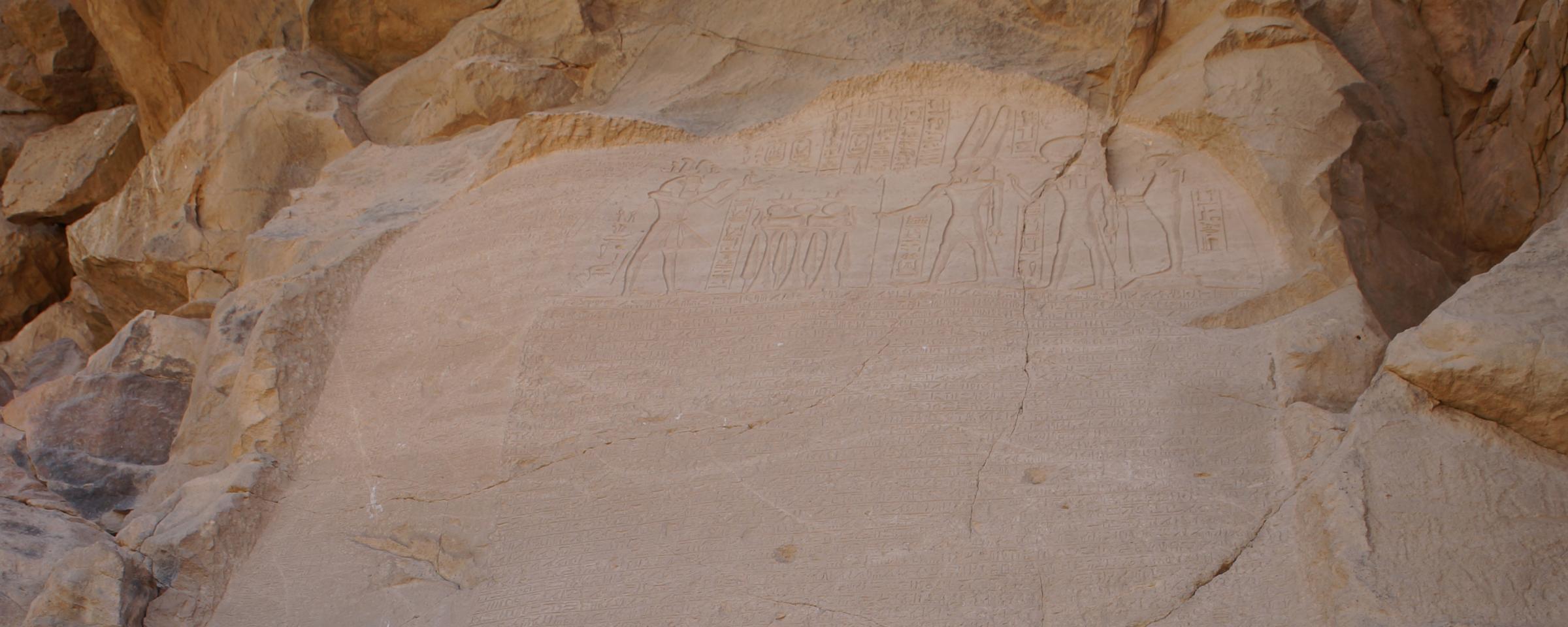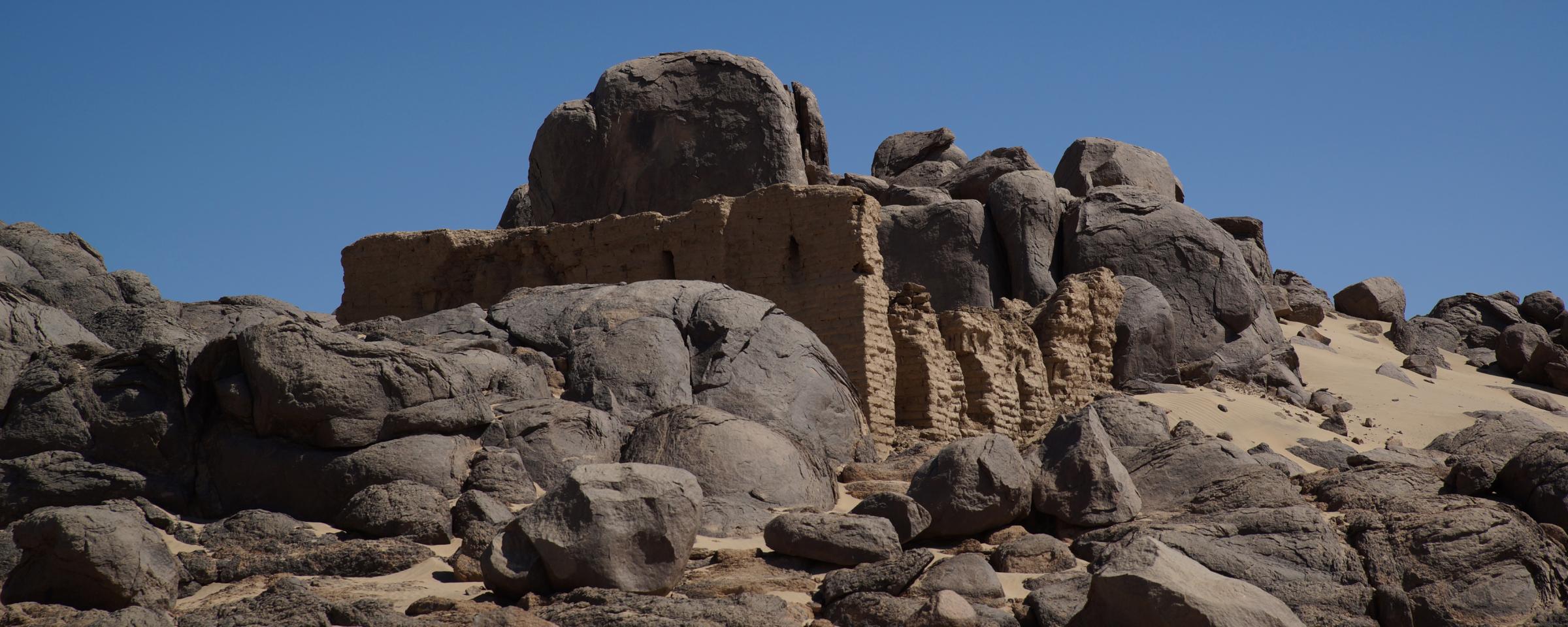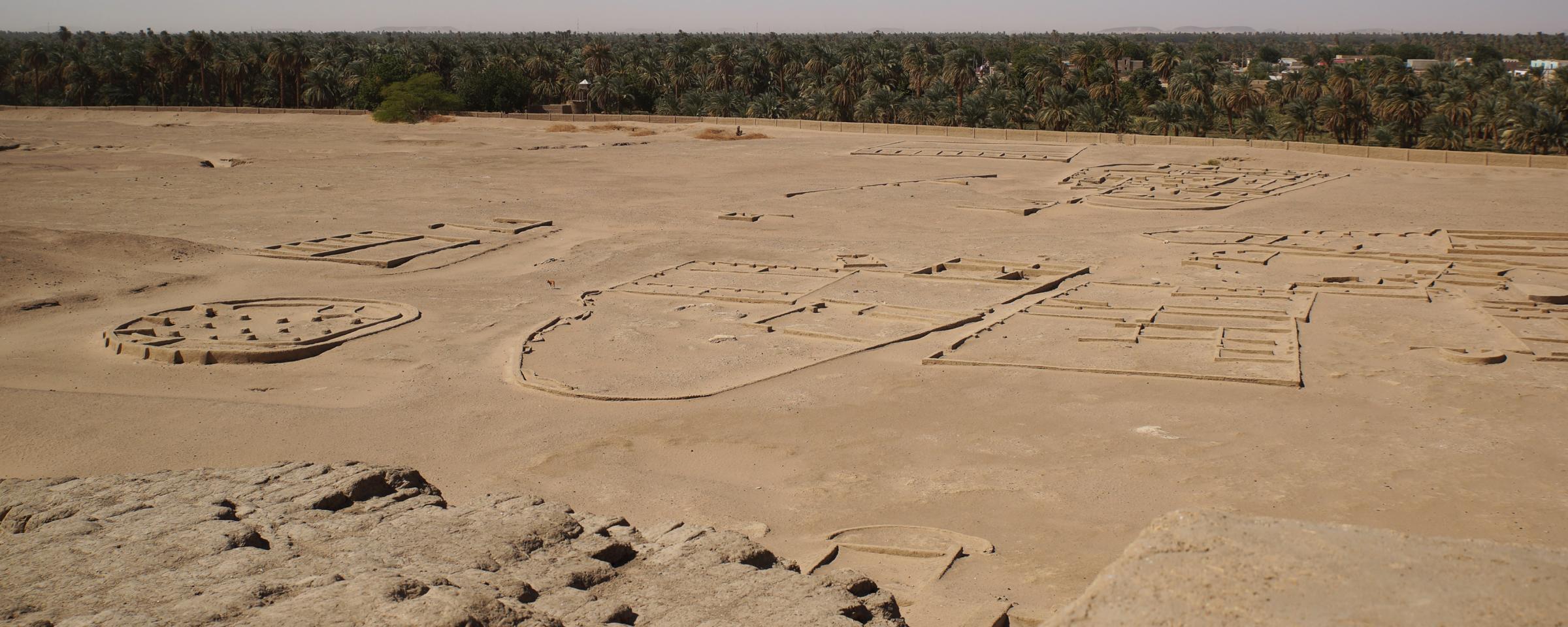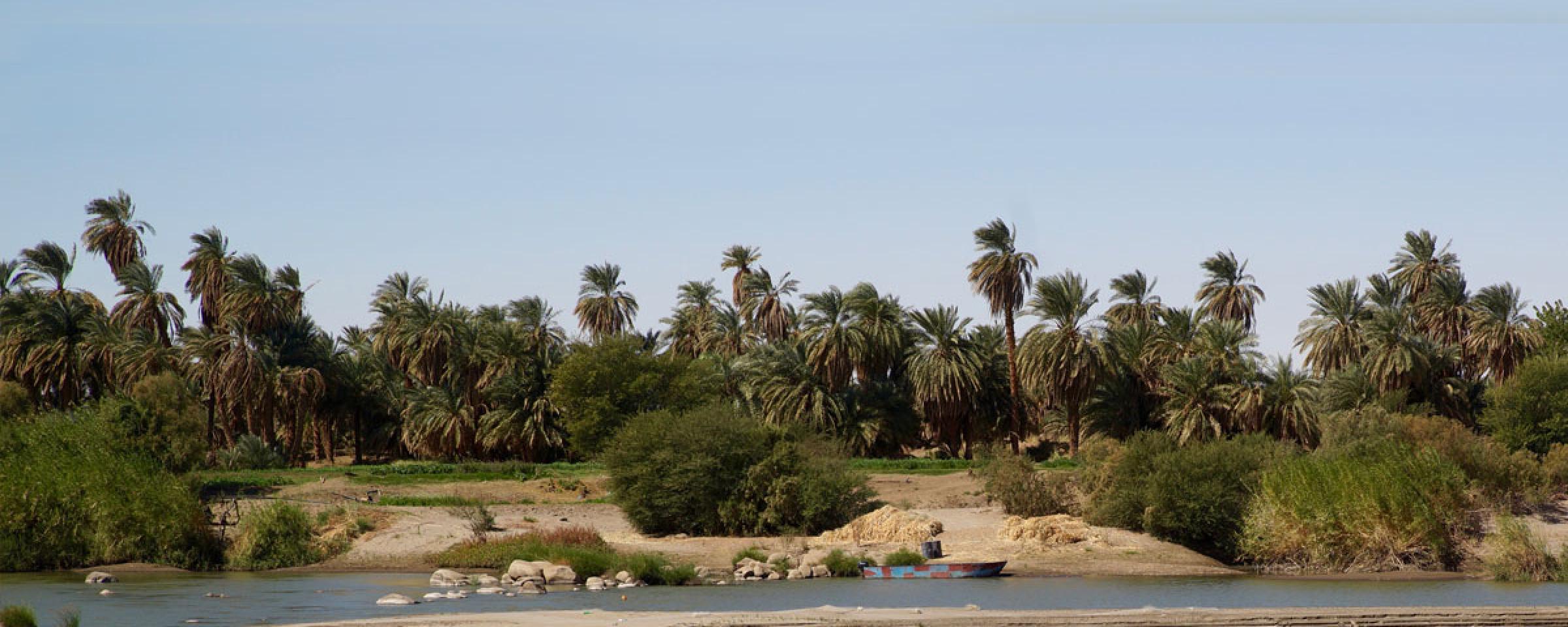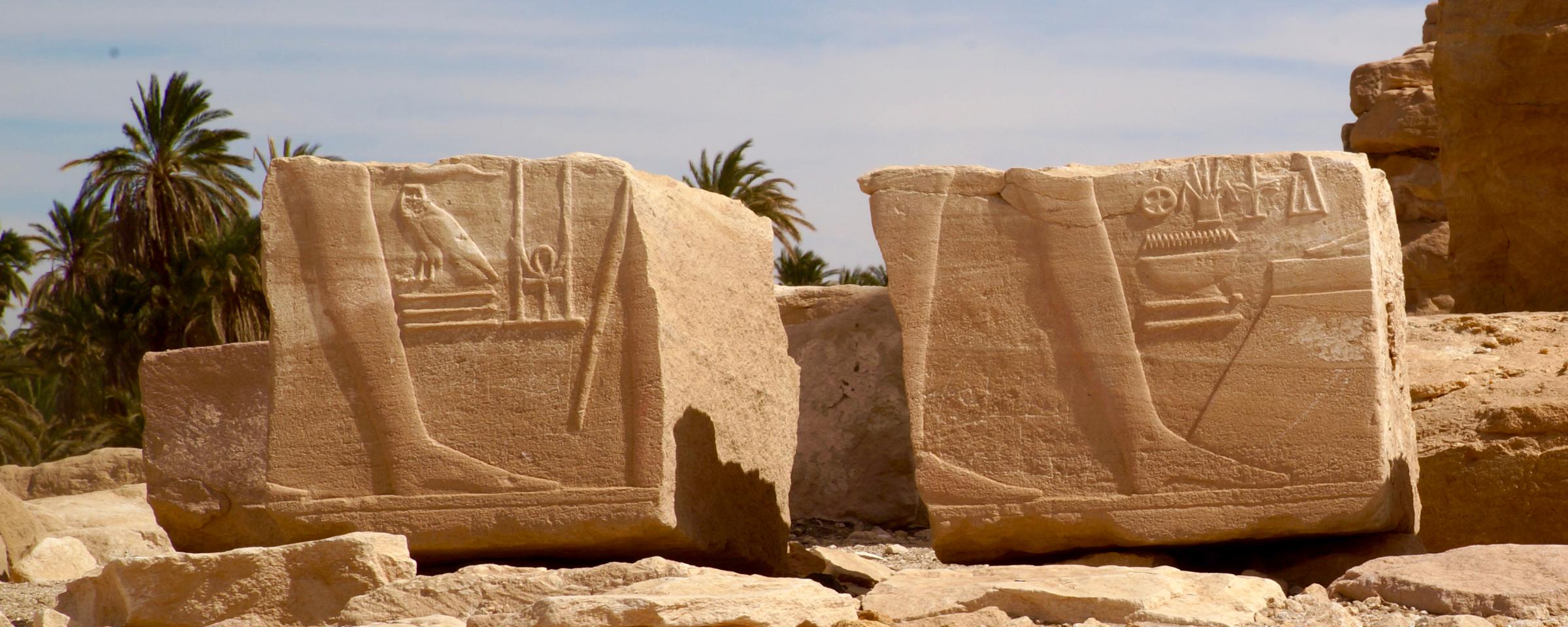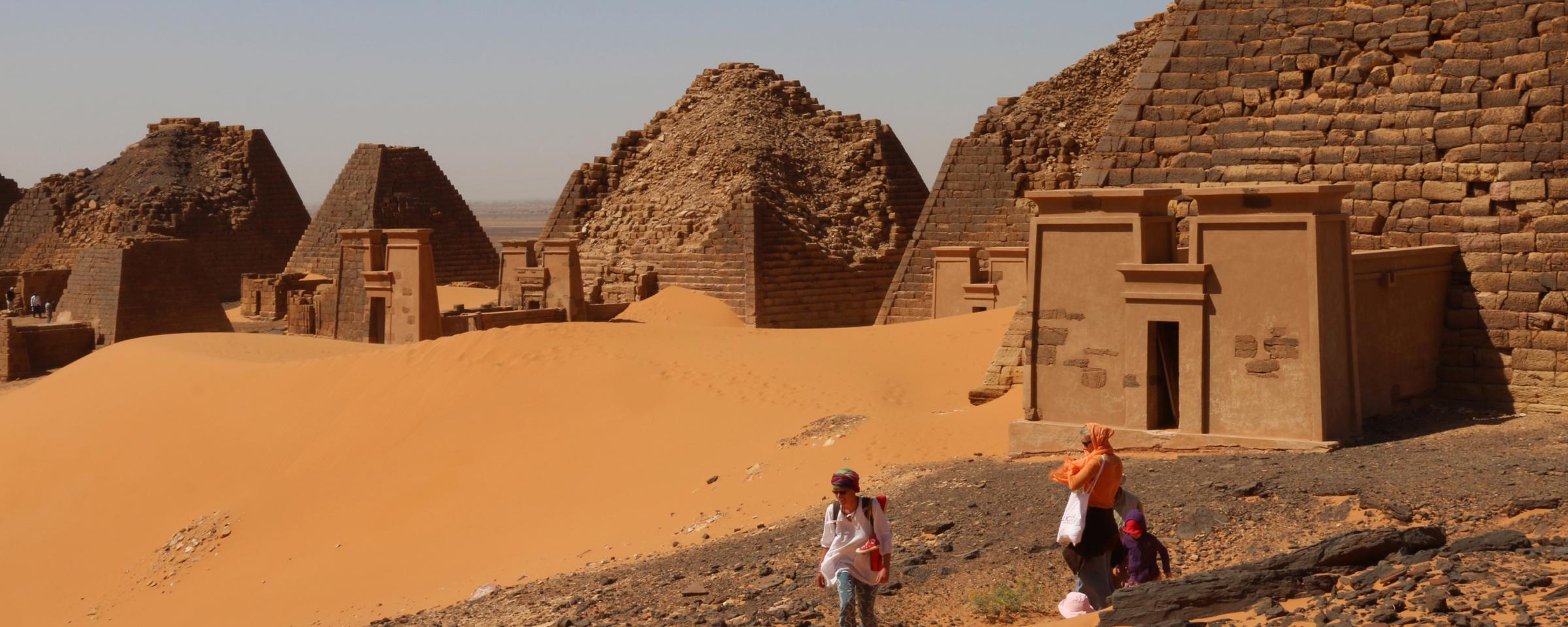Sudan Special
Egypt in Nubia
This unique trip is designed for those who have a special interest in the Egyptian monuments of the Middle Nile valley. It covers all the major Pharaonic sites between Sudanese Lower Nubia and the southernmost testimonies of the Egyptian presence below the Fifth Nile Cataract – including many sites which are not visited by any other tour operator. Tour highlights include the only two surviving Middle Kingdom fortresses in Lower Nubia, the New Kingdom towns of Amara, Sesebi and Dukki Gel, the temples of Soleb and Sedeinga, the Nauri Stela and the Thutmoside boundary inscriptions at Hajar al-Merwa. This trip will particularly appeal to those who have travelled the length and breadth of Egypt and want to explore the Pharaonic sites further south, as well as to those who have toured Sudan previously and want to return to see more of its cultural and natural attractions.
- Tour led by renowned Egyptologist and archaeologist Professor Claudia Näser
- Group size maximum 11 people
- Travel by 4WD from Khartoum up to the shores of Lake Nubia
- Explore the fortresses, temples and towns of the Pharaonic period in Nubia
- Visit Sudan's two UNESCO World Heritage sites
- Savour the beauty of the Middle Nile valley and the solitude of its deserts
- Enjoy the warmth and the hospitality of the Sudanese people
Arrive in Khartoum on an early morning flight (usually between 0100 and 0300), transfer to the hotel. A room is booked for you so you are able to get some rest and freshen up.
After a late breakfast, start to explore Sudan's capital city; sample its atmosphere and enjoy several vistas of the Blue and the White Nile. Stop at al-Mogran where the two rivers unite to form the iconic main Nile, the world's longest river.
Visit the National Museum which houses three New Kingdom temples removed from Buhen, Semna and Kumma during the 1960s UNESCO salvage campaign as well as the little known Egyptian-style painted tomb of the Nubian prince Djehutihotep from the same period. These monuments and numerous finds from Pharaonic sites throughout Sudan make the visit a perfect start to the trip.
Enjoy dinner in a typical local restaurant. (B, D)
Begin the journey northward on the tarmac road through the Bayuda Desert. As it is 700 kilometres up to the area of the Second Cataract, most of this day will be spent driving.
Stop at Tamtam, Sudan's most famous roadhouse with a picturesque mosque and at Old Dongola, the famous capital of the medieval Nubian kingdom of Makuria. The town's once imposing churches, palaces and houses are buried under huge sand dunes, which even covered the royal quarters of the citadel of the town. The excavated remains include parts of the gigantic city wall, the cathedral and a range of other churches, some of them with wall paintings, a monastery, palaces and the throne hall of the Makurian kings, which was turned into a mosque after the Islamic conquest of the kingdom in 1317. The nearby Muslim cemetery features impressive domed tombs, so-called qubbas, which mark the burial places of venerated Sufi sheikhs.
Beyond Old Dongola, the tarmac road ends. Set up camp in a circle of dunes in the Nubian Desert and sense the overwhelming solitude of the desert. (B, L, D)
Continue northwards, on a newly built tarmac road, past picturesque Nubian villages and beautiful vistas of the Nile.
Stop at the village of Quikkah and visit the famous qubba of Sheikh Idris Mahjoub.
Reach the Second Cataract and explore this remote region with its arid, rocky hinterlands and the narrow fertile river banks where farmers and fishermen pursue their work. It is an unusual community, entirely composed of men living under harsh conditions as migrant workers. All the villages have been lost to the waters of Lake Nasser, or Lake Nubia, as it is called on the Sudanese side.
Set up camp in the desert. (B, L, D)
Experience one of the trip's highlights, visiting the fortresses of Uronarti and Shalfak. They are the only fortresses surviving from a chain of 17 fortifications with which Pharaonic Egypt secured its southern border towards the Kingdom of Kerma in the heyday of the Middle Kingdom, about 1850 BC.
Now located on two islands in Lake Nubia, the massive mudbrick structures spread over 2500 m2 and 1700 m2 respectively. With walls still standing up to 8 metres high, they are impressive testimonies to both the power and the bureaucratic mind of the Egyptian Empire. They retain their complete ground plan and much of the architectural substance, even including remains of organic materials such as wood and reed. Walking through the streets, the barracks and the commanders' offices, little changed since Egyptian soldiers marched through them almost 4000 years ago, is a unique experience indeed.
Return south to the small town of Abri and spend the night in a local Nubian resthouse, with basic rooms and shared, but clean facilities. Those who prefer sleeping under the stars are welcome to put up their tents in the courtyard. (B, L, D)
Take a boat trip across the Nile to visit Amara West, an Egyptian town of the Ramesside period. Amara became the administrative centre of Upper Nubia only sometime after Egypt had conquered and destroyed the Kingdom of Kerma at the onset of the New Kingdom, about 1500 BC.
An archaeological mission run by the British Museum is currently uncovering the remains of spacious villas in the so-called western suburb, outside the walled town, as well as the contemporary tombs in the cemeteries nearby.
Continue to Sai Island, which features one of the most important New Kingdom sites, a large fortified town founded immediately upon the conquest of the region in the early New Kingdom. Right on top of its ruins, the Ottomans built a fort in the late 16th century AD.
The town site is surrounded by vast cemeteries, comprising tombs from the Kerma, through the Egyptian and later periods up to Islamic times. Another important sight on the island is the remains of its medieval cathedral.
Continue south to Wawa and spend the night in a local resthouse there. (B, L, D)
Undertake a boat trip across the Nile to visit the famous temples of Soleb and Sedeinga which were built in the New Kingdom under Pharaoh Amenhotep III.
The temple at Soleb is a classical Egyptian temple, with a processional route, massive pylons, courtyards and pillared halls. It equals the most important temples in Egypt, both in size and appearance. It was consecrated to Amun-Ra and the king himself.
Its rarely visited companion temple at Sedeinga was dedicated to queen Tiye as a manifestation of the Eye of Ra. It has undergone substantial excavations in recent years leading to the discovery of many beautifully carved relief blocks which can be visited in an accessible open air storage area.
In-between the two sites is Jebel Dosha, a rocky spur right beside the bank of the Nile, which features a rock-cut chapel of Thutmose III as well as several rock inscriptions of New Kingdom date. Its scenery and setting makes this site particularly attractive.
Overnight as on the previous day. (B, L, D)
Provided the car ferry at Delgo is running, cross the Nile to reach the site of Sesebi, another New Kingdom fortified town on the western bank of the Nile. Most of the extant remains at Sesebi, including two temple complexes, were built under Amenhotep IV, before he changed his name to Akhenaten.
Return to the east bank and travel south to Nauri to examine the famous, but rarely visited, Nauri Decree of Seti I. Together with several other rock inscriptions, it is cut in the eastern of two inselbergs forming an impressive landmark right at the bank of the Nile. Please note that the decree is halfway up the mountain and requires some climbing, the reward for which is a breath-taking view over the Nile and the surrounding landscape.
From there it is on into the desert to the mysterious site of Masida, which features a small church built high up in the rocks against a boulder with unique ancient rock drawings.
Set up camp in one of the valleys surrounding this enchanted location. (B, L, D)
Explore the rocky landscape of the Third Cataract with the great victory stela of Thutmose I as well as a range of other New Kingdom rock inscriptions relating to the conquest of Kerma by the Egyptians.
An Egyptian cemetery of New Kingdom date, as well as an ancient granite quarry, which still holds the unfinished statue of a Napatan king, are located in the same area.
The main part of the day will be dedicated to the impressive remains of the Kerma culture, including its main settlement with the so-called Western Deffufa, an enormous mudbrick building which still stands 18 metres tall and probably supported a temple on its roof.
The nearby cemetery is estimated to comprise more than 30,000 tombs, including the monumental tumuli which contained the burials of the Kerma kings and queens.
The third site to visit is Dukki Gel where Swiss and French archaeologists are currently uncovering the fortified town which the Egyptians founded when they had conquered Kerma around 1500 BC.
Transfer to Karima. Spend the night in the Nubian Resthouse, a charming boutique hotel on spacious well-kept grounds. (B, L, D)
Explore the archaeological treasures of Jebel Barkal and the Napatan region which were inscribed into the UNESCO World Heritage List in 2003.
The widely visible Barkal mountain was believed to be the abode of the god Amun. The New Kingdom pharaohs founded a town, called Napata, and a temple of Amun at its foot. In the early first millennium BC, Napata became the capital of the emerging Kushite rulers who eventually came to rule over Egypt as the 25th Dynasty. They enlarged the temple of Amun making it their state sanctuary, and built several new temples, including the Mut Temple which is partly cut into the mountain.
Visit Kurru, the ancestral cemetery of the Kushite rulers. The earliest tombs in this necropolis were built as tumuli, i.e. mound graves, while later generations started to erect Egyptian-style pyramids. Some of the underground burial chambers preserve rich painted decoration.
Cross the Nile to visit Nuri, the second royal necropolis in the Napatan region. It was founded by Taharqo, the third king of the 25th Dynasty. His pyramid is the largest in Sudan, the sides measuring 52 metres in length at the base.
Overnight as on the previous day. (B, L, D)
Cross the Bayuda Desert, the area bounded by the Great Nile Bend. Savour the breath-taking landscape and stop for photographs.
Join the Nile at Atbara, and visit the Meroitic temple of Amun at Dangeil.
Continue north to reach Hajar al-Merwa, a massive quartzite outcrop which carries the famous boundary inscriptions of Thutmose I and Thutmose III – representing the southernmost testimonies of Pharaonic Egypt.
Pitch camp in the shadow of this unique historic monument and spend your last night camping in this amazing landscape under a star-strewn sky. (B, L, D)
Turn south to visit Meroe, the capital of the Kushite Empire in its later days, i.e. from the third century BC to the fourth century AD. The site comprises the Royal City which was excavated in the early 20th century and boasts several temples, palaces and examples of fancy elite architecture. Further temples and burial grounds can be seen nearby.
The two Royal Necropoleis are five kilometres away from the Nile in a magnificent desert setting on two hills partly covered by yellow sand dunes. They comprise over fifty pyramids, some of them perfectly preserved, others restored. Already in the 19th century, the British traveller George A. Hoskins stated that "the pyramids of Geezah are magnificent, [...] but for picturesque effect and elegance of architectural design, I infinitely prefer these of Meroe."
Judge for yourself! Overnight at the beautiful Meroe Tented Camp. (B, L, D)
Continue south, departing from the Nile into the semi-desert landscape of the Butana, to visit Musawwarat es-Sufra, a sacral centre of the Meroitic period. The site's main monument is the enigmatic Great Enclosure, an architecturally unique complex comprising several temples on elevated terraces, connected by ramps and walled passages, surrounded by huge courtyards.
Professor Claudia Näser directed the archaeological mission undertaking research and conservation work at Musawwarat from 2005 to 2015, conducting excavations in the Great Enclosure and restoring the roof of the nearby Apedemak Temple. To tour the site with her is indeed a unique opportunity.
Continue to Naga, a nearby Meroitic town with several superbly preserved temples. Walk through an avenue of rams to the temple to Amun, built by King Natakamani about two thousand years ago, and explore the richly decorated Lion Temple, dedicated to the lion-headed Kushite god Apedemak.
In 2011, Musawwarat, Naga and Meroe were inscribed in the UNESCO World Heritage List as the serial property "Island of Meroe".
Return to the Nile and continue past the rocky formations of the Sixth Cataract to Khartoum. Enjoy the hospitality of your Khartoum hotel. (B, L, D)
Spend a fabulous last day in Khartoum, savouring the rhythm of Sudanese metropolitan life.
Cross the confluence of the Nile to Omdurman. The old capital holds important testimonies to the country's colonial and postcolonial history. Visit the Mahdi Tomb and Khalifa House, Sudan's national monuments. Explore the famous souk in Omdurman, said to be one of the largest markets in Africa.
Proceed to Hamad al-Nil's tomb where the Sufi ceremony of the Whirling Dervishes starts an hour before sunset (on Fridays only).
Enjoy a good-bye dinner at the hotel or in one of Khartoum's specialty restaurants. (B, L, D)
Transfer to the airport for an early morning flight (usually between 0200 and 0400), arriving at your home destination later the same day.

